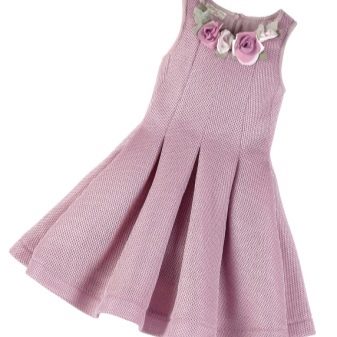What is elastane and where is it used?
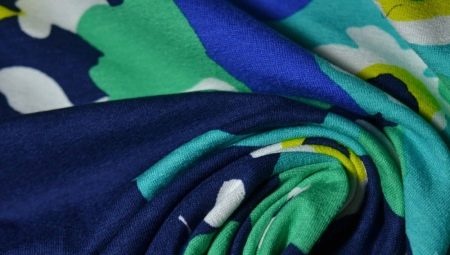
Elastane - or elastic textile - is a popular material that is actively used for sewing any type of clothing: from service to underwear jersey. Among the features of this type of canvas are the stretch effect, wear resistance and long service life. It is worth considering in more detail the characteristics of the material, the possibilities of its use.

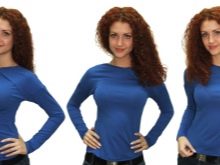

What it is?
Elastane is a durable and at the same time quite elastic fabric, woven from fibers of natural and artificial origin. The special way of weaving the elements and the unique combination of their characteristics allow achieving elastic properties and a smooth surface of the fabric. Clothes made of elastane fit the body tightly and stretch well, for which they are appreciated by consumers.
Stretch is a property that has helped elastane gain popularity. The canvas has the ability to increase in size literally 8 times while maintaining its original properties, if necessary, quickly restores its shape. Lycra threads are often made from synthetic fibers, the amount of which determines the density of the finished product.
It is not difficult to determine the presence of elastane in the composition of clothing. It is worth grasping the canvas and gently pulling it, and then letting it go. If there are synthetic fibers, the fabric will regain its original shape.



Additional benefits of elastane.
- Resistance to external influences. This includes solar radiation, salt water, aggressive environments and even mechanical stress.
- Fast recovery of shape. It is achieved due to the elastic and elastic properties of the fabric. Often such a description flickers in advertisements for elastic canvases.
- Low moisture absorption. The material practically does not absorb moisture, which means that it is less susceptible to dirt.
- Softness. The fabric can be draped easily. Pleasant to the touch, arouses positive consumer reviews. It is especially important when blending elastane with other fibers.
- High breathability. Leather in elastane clothes will breathe.
- Ease. This result was achieved by reducing the specific gravity of the canvas.
- Easy to wash. Stains are easily removed, which does not cause problems if you need to wash the material.
- Ease of use. Things made of elastane do not wrinkle and keep their shape and attractive appearance for a long time. You don't really need to take care of the fabric, you just have to adhere to the recommendations.
- Strength and wear resistance. The material will last a long time and will not deform.



And also ease of use is distinguished among the advantages.
Of course, it is not without its drawbacks. One of the main disadvantages is allergic reactions caused by the components of the material. Additional disadvantages include thinning and fading of the canvas. This happens with regular exposure to the sun or constant washing of the product at high temperatures.
As you can see, the elastane fabric has significantly fewer pluses, so the material is quite in demand on the market.
To avoid any drawbacks, when choosing a fabric, you should give preference to natural canvases with a small addition of elastane.
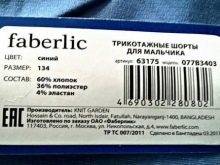
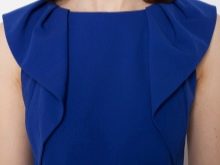
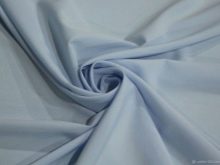
History
For the first time they started talking about elastane in the United States back in the middle of the last century. The unique fabric was obtained by the scientist Joseph Shivers, who conducted regular experiments in one of the laboratories of the DuPont company. When the material was tested, it was put into production for corsets.
Only in the 60s of the last century, elastane began to be used for sewing clothes for sports. And literally 10 years later, innovative at that time canvases gained popularity in factories for the production of everyday and even evening clothes. Today, popular manufacturers of elastane items are:
- Invista;
- Asahi Kasei;
- Fillatice Spa.
The largest suppliers are located in China, USA, Japan and Italy. Of course, the American brand is the world leader.
Today, the composition of elastane includes flexible segments held together by rigid ligaments. Therefore, with the help of this fiber weaving technology, manufacturers manage to obtain an elastic material that resembles rubber in its properties.



Elastane fabric manufacturing techniques vary.
- Wet way. When using this technology, synthetic threads are washed in water heated to 95 degrees Celsius. The result is stretching of the fibers, followed by elongation by 1.5 times. Next, the threads are wound on a roller and dried in a special chamber, inside which the temperature is set at 120 degrees. The procedure for drying the fibers takes up to 30 hours.
- Dry. The technique involves applying a special composition - a lubricant - to the fibers that came straight from the spinning shaft. After that, the threads are wound on bobbins and sent to a heat chamber, the air temperature inside which is 80 degrees. Drying time - 3 hours.
- Chemical. The threads are immersed in a solution of macrodisocyanate, with which they begin to actively interact. The result is the acquisition of the necessary properties by the fibers.
- Extrusion. In this case, a solution of the material is first prepared, which is then passed through the forming holes. With the help of this technology, it is possible to obtain a huge amount of high quality polymer threads.
The dry method of forming the fibers of the future elastane is considered the most popular due to its availability and low price. In addition, the technique was found to be effective. The resulting fabric has the required characteristics.


Views
The fabric market is represented by a wide range of elastane fabrics. They can be divided into three main categories.
- Lycra. Demonstrates the standard characteristics of an elastic web. It is a material created on the basis of polyurethane threads, which are characterized by a high degree of elongation and at the same time the ability to retain their properties even with significant deformations. Lycra is available in three colors: transparent, translucent and white. Each species is distinguished by a compacted texture and other indicators.
- Crepe. It has an increased density, due to which the strength characteristics of the canvas are increased. Crepe is a smooth and shiny material with a matte back and a coarse texture.
- Meryl. The webs are formed from polyamide fibers. At the exit, a smooth and elastic fabric is obtained, which perfectly permeates air, but does not absorb moisture.
Regardless of the method of forming the threads, the finished fabric is elastic and durable. Customer reviews confirm that elastane clothes fit the figure beautifully and emphasize the shape.

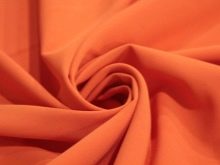

There are other classifications of material. According to the characteristics of stretching, the canvases are divided into two types.
- Two-dimensional. Such fabrics only stretch in length or width.
- Four-dimensional. Stretching is possible in all directions.
And you can also divide the canvases by the color of the spandex thread that is used for their production. At the exit, the material is white, translucent or completely transparent. Finally, elastane fibers are distinguished by their density.
On average, the indicator ranges from 1.1 to 1.3 g / cm3 for a conventional material with a stretch effect.

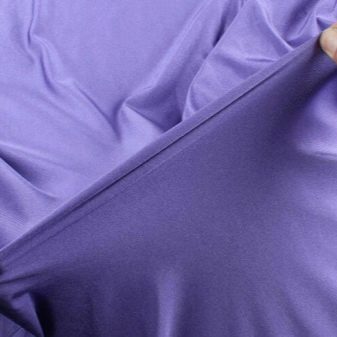
Areas of use
Elastane is considered one of the most demanded materials. Many different items are made from it.
- Everyday items like skirts, shirts, jeans, T-shirts and even dresses. But many, of course, are familiar with leggings that stretch well.
- Festive outfits. Evening suits, dresses, blouses and skirts are sewn from elastane.
- Stage outfits and carnival costumes. Not a single holiday is complete without stretching material.
- Work clothes. The high performance properties of elastane ensure a long service life of things.
- Home textiles. This category includes curtains, upholstery and bedding.
- Sportswear. Elastic things stretch well and also have increased vapor permeability. In addition, sweat drops are not visible on the sportswear made of this material after training.

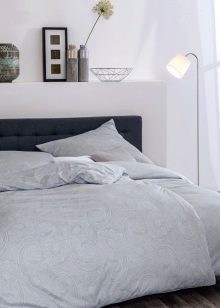

Finally, the material is used in the production of tights, socks and stockings. It is worth noting that the fabric is always used as a supplement. Elastane works well with both natural and synthetic fibers and improves the performance of the finished product. Here are the possible combinations.
- Cotton. The result is a breathable fabric that perfectly absorbs moisture and has a smooth surface. In addition, the combination of elastane and cotton prevents shrinkage of the material and increases its durability.
- Linen. Working together with polyurethane yarns allows for efficient air exchange. With the addition of synthetic fibers, the fabric becomes more elastic, stops wrinkling and retains its original properties for a long time.
- Viscose. The result of the combination of materials is an aesthetic and pleasant-to-touch fabric that allows air and moisture to pass through, but at the same time has increased tear resistance.
- Footer. Together with the synthetic component, a light and soft material is obtained, on the surface of which, even with prolonged use, puffs do not appear.
- Ribana. The joint work of two types of fibers makes it possible to weave a high-strength fabric, which at the same time perfectly stretches and does not allow the body to overheat.
- Jeans. The collective action of jeans with PU threads increases the strength of the fabric and gives it a stretch effect.
- Nylon. Together with elastane, it forms a material that shines strongly in the sun. The fabrics are suitable for sewing evening wear.
The ideal combination is viscose and elastane, while the latter is used in small quantities. The material is soft and non-irritating to wear. Practical items are easy to wash and do not fade even after prolonged use.



Care rules
Any elastane product requires careful and timely care in accordance with the rules from the instructions, which comes with clothing or other product. It is worth highlighting a few of the most useful recommendations that will help maintain the quality of the thing and extend its service life.
Washing
Popular tips for washing elastane.
- It is better to wash the material by hand, or run the machine with the liquid inside at room temperature. Otherwise, there is a high probability of deformation of the elastane with subsequent destruction.
- The washing machine can be used only if it has a gentle wash mode.
- It is not necessary to twist the washed elastane thing too much to prevent the appearance of permanent deformations. If the thing needs to be squeezed out, then it is worth starting the easy spin mode in the machine.
- Colored clothing should be washed separately. Otherwise, there is a high probability of spoiling all things at once.
Instead of conditioners and bleaching powders, it is recommended to use mild formulations that will not harm the condition of the canvas. It is worth giving up any aggressive means.


Drying and ironing
It's worth starting by drying elastane products:
- the procedure should be carried out away from sunlight;
- it is better if the thing immediately lies horizontally, then drying will be more effective;
- when using a washing machine, it is recommended to set the most gentle mode.
Iron things made of elastane only when necessary, including the most gentle mode on the iron. Many people say that ironing can be completely abandoned, since the material keeps its shape perfectly. It is not recommended to forcibly stretch things made of material, especially to place them on hangers.
Ignoring the recommendations will lead to a change in the properties of the material. Products with elastane additives will not require special care if you follow the basic recommendations and rules.
